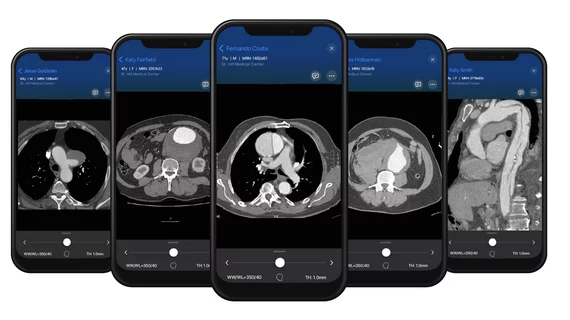FDA Roundup: AAA EVAR recommendations, key approvals in stroke care and interventional cardiology
The U.S. Food and Drug Administration (FDA) made a lot of headlines in the last week, led by its approval of empagliflozin for patients presenting with heart failure with preserved ejection fraction (HFpEF).
These are some other big stories that may stand out to cardiologists, healthcare technology companies and anyone else interested in the cardiovascular industry:
1. FDA shares new surveillance recommendations for patients after AAA EVAR
The FDA has shared new recommendations that highlight the importance of lifelong surveillance — including medical imaging when necessary — for patients who undergo abdominal aortic aneurysm (AAA) endovascular aortic repair (EVAR).
The agency called for imaging surveillance within 30 days of AAA EVAR in addition to annual follow-up imaging. Such a schedule, the FDA wrote, “may help identify adverse events such as endoleaks, device migration, loss of patency and failure of aneurysm sac regression before the occurrence of potentially serious and life-threatening adverse events.”
Also, if the 30-day imaging results turn up anything concerning, a six-month follow-up visit is recommended.
“For patients under your care who are being considered for EVAR, physicians should discuss the risks and benefits of all available AAA treatment options with patients (including open surgical repair), while emphasizing the need for lifelong follow-up imaging and the possibility of reinterventions following EVAR,” the agency added. “A patient’s willingness and ability to comply with annual imaging follow-up should be considered and discussed in determining the most appropriate treatment option.”
Read the full advisory here.
2. AI-powered stroke solution receives FDA clearance
Viz.ai has officially gained FDA clearance for Viz Aneurysm, a new artificial intelligence (AI)-powered solution for detecting cerebral aneurysms.
The advanced algorithm was designed to standardize post-detection care throughout a health system, capturing the relevant data and alerting all necessary parties. A recent analysis in Stroke explored the solution’s potential, finding that it was 94% accurate when it came to detecting these potentially fatal aneursyms.
“The model has demonstrated that a deep learning AI algorithm can achieve clinically useful levels of accuracy for clinical decision support and will help us to improve how we help aneurysm patients,” lead author Vitor Mendes Pereira, MSc, MD, director of Endovascular Research and Innovation at the University of Toronto, said in a prepared statement
“Viz Aneurysm has the potential to significantly increase the number of aneurysms detected and clinically followed,” added Jayme Strauss, chief clinical officer for Viz.ai. “The combination of detection with an ability to schedule patients for neurovascular specialist follow-up is an important advancement for aneurysm patients, helping patients obtain the necessary follow-up from this potentially deadly disease and driving improved outcomes on the population health level.”
3. Catheters, guidewires from Teleflex gain FDA clearance for use during CTO PCI procedures
Teleflex, a Pennsylvania-based healthcare technology company, announced that several of its catheters and coronary guidewires have been cleared by the FDA for use in chronic total occlusion percutaneous coronary intervention (CTO PCI) procedures.
This expanded indication includes the company’s GuideLiner V3 catheter, TrapLiner catheter, Turnpike catheters, Spectre guidewire, Raider guidewire, Bandit guidewire, Warrior guidewire and R350 guidewire.
The FDA’s decision was based in part on findings from the CTO-PCI study, which found that technical success was seen in 93.3% of patients of patients.
“Considering the complexity of both anatomy and procedural strategy in this study, the very favorable success achieved underscores the need for an ‘interventional toolbox’ that features an array of enabling device technologies that include guidewires, guide catheter extensions and microcatheters,” David E. Kandzari, MD, one of the study’s principal investigators and chief of the Piedmont Heart Institute in Atlanta, said in a prepared statement. “Given the challenging patient population, the high technical success rate in this most demanding PCI environment is particularly notable.”
Related Content:
FDA expands two Medtronic cardiac cryoablation catheters for AVNRT
Senate confirms cardiologist Robert Califf as next FDA commissioner
Tracking sac regression after endovascular aneurysm repair for AAA

